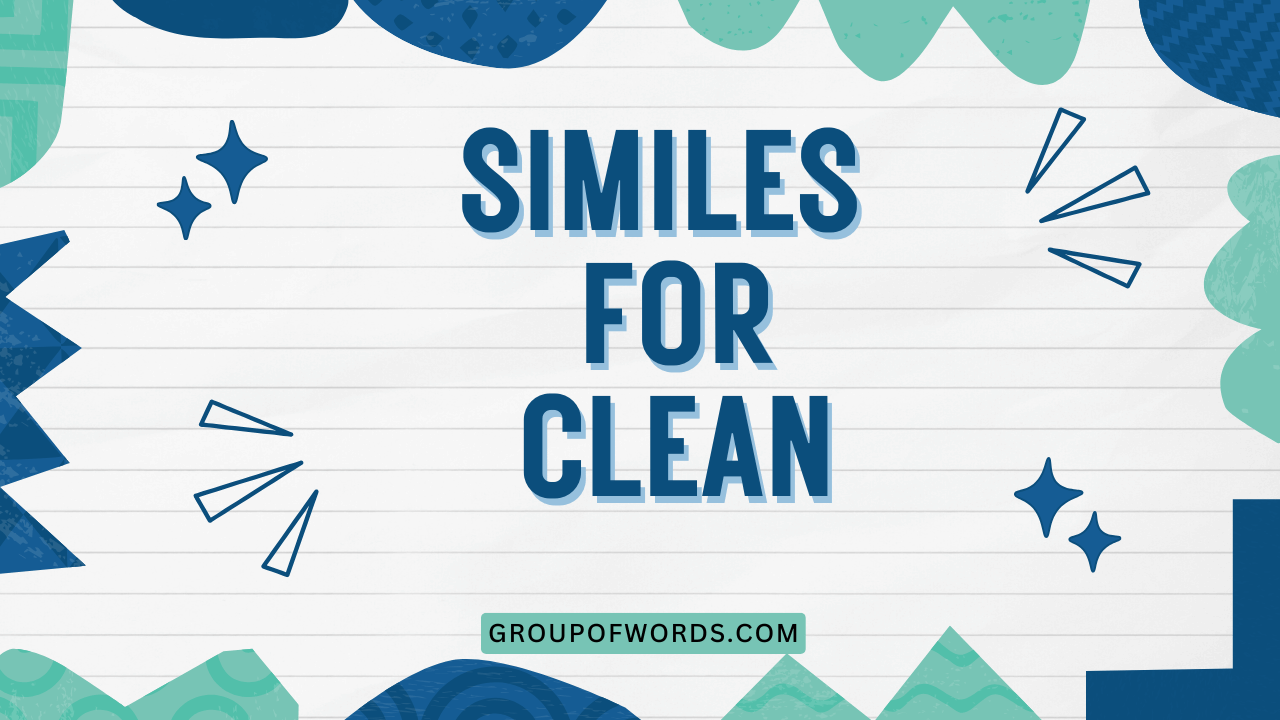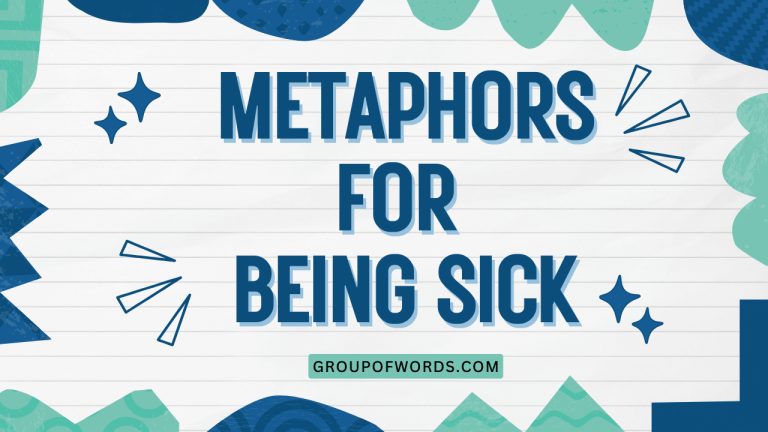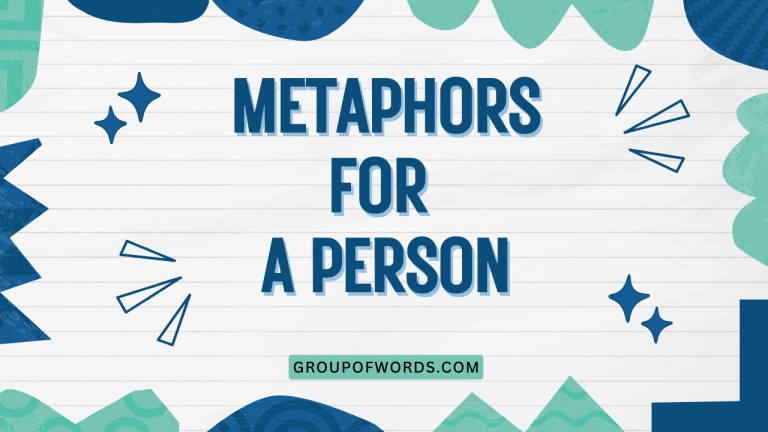Similes for Clean: Sparkling Comparisons in English Grammar
Understanding and using similes effectively adds color and vividness to your writing and speech. Similes, figures of speech that compare two unlike things using “like” or “as,” are particularly useful when describing cleanliness.
This article explores a variety of similes for “clean,” providing definitions, examples, and practice exercises to help you master their usage. Whether you’re an English language learner or a seasoned writer, this guide will enhance your ability to create impactful and descriptive language.
This comprehensive exploration will cover various aspects of similes for ‘clean,’ from basic definitions to advanced usage and common mistakes. This detailed guide is crafted for English language learners, writers, and anyone keen to improve their descriptive skills.
Table of Contents
- Introduction
- Definition of Simile and Its Function
- Structural Breakdown of Similes
- Types of Similes for “Clean”
- Examples of Similes for “Clean”
- Usage Rules for Similes
- Common Mistakes When Using Similes
- Practice Exercises
- Advanced Topics: Nuances and Context
- Frequently Asked Questions
- Conclusion
Definition of Simile and Its Function
A simile is a figure of speech that compares two different things in an interesting way. It shows the similarities between two unlike things by using the words “like” or “as.” The main function of a simile is to make descriptions more vivid and engaging. Similes help the reader or listener create a stronger mental image of what is being described. By drawing a comparison to something familiar, you can make abstract concepts more concrete and understandable. Similes are powerful tools for writers and speakers to add depth and color to their language.
Here’s a breakdown of the key components:
- Tenor: The subject being described.
- Vehicle: The object or concept to which the tenor is compared.
- Ground: The shared quality between the tenor and the vehicle.
- Connecting Word: “Like” or “as.”
Structural Breakdown of Similes
The structure of a simile is fairly straightforward, typically following the pattern: A is like B, or A is as [adjective] as B. Understanding this structure is essential for creating effective and grammatically correct similes.
The key elements are the subject (A), the comparison word (“like” or “as”), and the object of comparison (B). The object of comparison should have a quality that is being attributed to the subject.
A well-constructed simile enhances the clarity and impact of your writing. Paying attention to the specific words you choose and their relationship to each other is crucial for creating a meaningful comparison.
Here’s a more detailed look at the structural elements:
- Subject (A): This is the thing you are describing. For example, “The kitchen.”
- Comparison Word: This is either “like” or “as.” For example, “as.”
- Adjective (Optional): You can include an adjective to further refine the comparison. For example, “clean.”
- Object of Comparison (B): This is what you are comparing the subject to. For example, “a whistle.”
Thus, a full simile example is: “The kitchen is as clean as a whistle.”
Types of Similes for “Clean”
Similes for “clean” can be categorized based on the specific aspect of cleanliness they emphasize. These categories help to provide a more nuanced and descriptive picture.
By understanding these different types, you can choose the most appropriate simile to convey the precise level of cleanliness you want to describe. This categorization can also inspire creativity and help you generate more original and effective similes.
The categories include sparkling, spotless, fresh, and pure.
Sparkling Clean
These similes emphasize the shining and gleaming aspect of cleanliness. They often involve comparisons to objects that are known for their brilliance and reflective qualities.
For example, “as sparkling as diamonds” or “like a polished mirror.” These similes are particularly effective when describing surfaces that reflect light and appear exceptionally bright.
Spotless Clean
These similes highlight the absence of any marks, stains, or imperfections. They often compare the subject to something that is inherently free of blemishes.
Examples include “as spotless as a blank canvas” or “like a pristine sheet of paper.” These similes are suitable for describing objects or surfaces that are completely free of dirt and grime.
Fresh Clean
These similes focus on the invigorating and revitalizing aspect of cleanliness. They often involve comparisons to natural elements or sensations that evoke a sense of freshness.
Examples include “as fresh as a daisy” or “like a spring breeze.” These similes are ideal for describing environments or objects that have a clean and refreshing scent or feeling.
Pure Clean
These similes emphasize the complete absence of impurities or contaminants. They often compare the subject to something that is naturally pure or has been thoroughly purified.
Examples include “as pure as driven snow” or “like a crystal-clear stream.” These similes are appropriate for describing substances or environments that are free of any pollutants or unwanted elements.
Examples of Similes for “Clean”
The following tables provide a wide range of examples of similes for “clean,” categorized by the specific aspect of cleanliness they emphasize. Each table includes a variety of options to help you find the perfect simile for your needs.
These examples are designed to inspire your own creativity and help you understand how to effectively use similes in your writing and speech. Consider the context and the specific quality of cleanliness you want to highlight when selecting a simile.
Sparkling Clean
This table provides examples of similes that emphasize the shining and gleaming aspect of cleanliness. These similes are perfect for describing surfaces that reflect light and appear exceptionally bright.
| Simile | Explanation |
|---|---|
| As sparkling as diamonds | Emphasizes the brilliance and shine. |
| Like a polished mirror | Highlights the reflective quality. |
| As gleaming as gold | Suggests a rich and radiant cleanliness. |
| Like a freshly buffed car | Implies a thorough and meticulous cleaning. |
| As shiny as a new penny | Conveys a bright and untarnished appearance. |
| Like stars in the night sky | Suggests a scattering of bright, clean points. |
| As bright as polished silver | Emphasizes the reflective and lustrous quality. |
| Like sunlight on water | Implies a vibrant and shimmering cleanliness. |
| As radiant as a sunrise | Suggests a fresh and invigorating cleanliness. |
| Like a crystal chandelier | Highlights the elegant and dazzling cleanliness. |
| As luminous as a pearl | Emphasizes the soft and glowing cleanliness. |
| Like a newly waxed floor | Implies a smooth and reflective surface. |
| As brilliant as a spotlight | Suggests an intense and focused cleanliness. |
| Like a shimmering dewdrop | Highlights the delicate and sparkling cleanliness. |
| As reflective as a still lake | Emphasizes the smooth and mirror-like surface. |
| Like a gleam in someone’s eye | Implies a lively and energetic cleanliness. |
| As glistening as morning frost | Suggests a crisp and sparkling cleanliness. |
| Like a brand new chrome appliance | Highlights the modern and sleek cleanliness. |
| As polished as a gemstone | Emphasizes the precious and refined cleanliness. |
| Like a sequined dress under the lights | Suggests a festive and dazzling cleanliness. |
| As clear as a polished lens | Implies a transparent and unobstructed view. |
| Like the sheen on a raven’s wing | Highlights the dark and lustrous cleanliness. |
| As vibrant as a neon sign | Emphasizes the bright and attention-grabbing cleanliness. |
Spotless Clean
This table provides examples of similes that highlight the absence of any marks, stains, or imperfections. These similes are suitable for describing objects or surfaces that are completely free of dirt and grime.
| Simile | Explanation |
|---|---|
| As spotless as a blank canvas | Emphasizes the absence of any marks. |
| Like a pristine sheet of paper | Highlights the untouched and immaculate quality. |
| As immaculate as a surgeon’s tools | Suggests a sterile and flawless cleanliness. |
| Like a freshly laundered shirt | Implies a crisp and unblemished appearance. |
| As clean as a whistle | Conveys a simple and absolute cleanliness. |
| Like a perfectly wiped countertop | Suggests a thorough and meticulous cleaning. |
| As unblemished as a newborn’s skin | Emphasizes the pure and untouched quality. |
| Like a museum exhibit | Implies a carefully maintained and preserved cleanliness. |
| As clear as a pane of glass | Suggests a transparent and unobstructed cleanliness. |
| Like a brand new car | Highlights the flawless and pristine condition. |
| As pure as the driven snow | Emphasizes the untouched and untainted cleanliness. |
| Like a sterilized instrument | Implies a thorough and germ-free cleaning. |
| As faultless as a clock’s mechanism | Suggests a precise and perfect cleanliness. |
| Like an empty whiteboard | Highlights the clear and ready-to-use quality. |
| As pristine as a mountain lake | Emphasizes the natural and untouched cleanliness. |
| Like a just-washed window | Implies a clear and unobstructed view. |
| As polished as a billiard ball | Suggests a smooth and flawless surface. |
| Like a freshly printed page | Highlights the crisp and unmarked quality. |
| As untouched as a sealed package | Emphasizes the undisturbed and pristine condition. |
| Like a spotless mirror reflecting perfection | Suggests a flawless and accurate reflection. |
| As blank as a new slate | Implies a fresh start and clean beginning. |
| Like a perfectly dusted shelf | Highlights the meticulous attention to detail. |
| As immaculate as a white glove inspection | Emphasizes the rigorous and thorough cleanliness. |
Fresh Clean
This table provides examples of similes that focus on the invigorating and revitalizing aspect of cleanliness. These similes are ideal for describing environments or objects that have a clean and refreshing scent or feeling.
| Simile | Explanation |
|---|---|
| As fresh as a daisy | Emphasizes the natural and invigorating quality. |
| Like a spring breeze | Highlights the light and airy freshness. |
| As crisp as autumn air | Suggests a cool and invigorating cleanliness. |
| Like a newly opened window | Implies a revitalizing and airy feeling. |
| As clean as mountain air | Conveys a pure and refreshing quality. |
| Like a freshly brewed cup of tea | Suggests a warm and comforting cleanliness. |
| As invigorating as a morning shower | Emphasizes the revitalizing and energizing effect. |
| Like a just-cut lawn | Implies a neat and refreshing environment. |
| As fragrant as lavender fields | Suggests a pleasant and aromatic cleanliness. |
| Like a newly washed towel | Highlights the soft and comforting freshness. |
| As pure as a mountain spring | Emphasizes the untouched and untainted cleanliness. |
| Like a sterilized instrument | Implies a thorough and germ-free cleaning. |
| As faultless as a clock’s mechanism | Suggests a precise and perfect cleanliness. |
| Like an empty whiteboard | Highlights the clear and ready-to-use quality. |
| As pristine as a mountain lake | Emphasizes the natural and untouched cleanliness. |
| Like a breath of fresh air | Implies a revitalizing and invigorating sensation. |
| As rejuvenating as a spa treatment | Suggests a relaxing and refreshing cleanliness. |
| Like a newly cleaned fish tank | Highlights the clear and vibrant environment. |
| As uplifting as a sunny day | Emphasizes the cheerful and bright cleanliness. |
| Like a room after airing it out | Suggests a breathable and refreshed space. |
| As revitalizing as a cold plunge | Implies an energizing and awakening cleanliness. |
| Like a freshly vacuumed carpet | Highlights the neat and tidy environment. |
| As comforting as clean sheets on the bed | Emphasizes the cozy and inviting cleanliness. |
Pure Clean
This table provides examples of similes that emphasize the complete absence of impurities or contaminants. These similes are appropriate for describing substances or environments that are free of any pollutants or unwanted elements.
| Simile | Explanation |
|---|---|
| As pure as driven snow | Emphasizes the untouched and untainted quality. |
| Like a crystal-clear stream | Highlights the transparent and unpolluted nature. |
| As unadulterated as spring water | Suggests a natural and pristine cleanliness. |
| Like a vacuum-sealed environment | Implies a completely sterile and contaminant-free space. |
| As clean as a lab environment | Conveys a controlled and purified quality. |
| Like a filtered water source | Suggests a thorough and refined cleanliness. |
| As sterile as a surgical theater | Emphasizes the germ-free and hygienic condition. |
| Like a freshly sanitized surface | Implies a disinfected and purified environment. |
| As untainted as a newborn’s soul | Suggests an innocent and pure cleanliness. |
| Like a cloudless sky | Highlights the clear and unobstructed purity. |
| As clear as distilled water | Emphasizes the absence of impurities. |
| Like an environment untouched by pollution | Implies a pristine and unspoiled condition. |
| As pure as a baby’s laughter | Suggests an innocent and uncorrupted state. |
| Like a sanctuary of cleanliness | Highlights the protected and preserved environment. |
| As unblemished as a flawless diamond | Emphasizes the perfect and untainted quality. |
| Like a freshly cleaned hard drive | Implies the removal of unwanted or unnecessary elements. |
| As decongested as after nasal rinse | Suggests the removal of blockages or impurities. |
| Like a mind free of worries | Highlights the lightness and clarity of a clean state. |
| As innocent as a first snowfall | Emphasizes the purity and untouched quality. |
| Like a blank page ready to be written on | Suggests a new beginning and the absence of previous marks. |
| As clear as a bell | Implies a crisp and pure sound, free from distortion. |
| Like a purged system after a cleanse | Highlights the removal of toxins or unwanted elements. |
Usage Rules for Similes
Using similes effectively requires adherence to certain rules to ensure clarity and impact. The comparison should be logical and easily understood by the reader.
Avoid comparing things that have no obvious similarity. The simile should also be original and avoid clichés, which can make your writing seem uninspired.
Furthermore, be mindful of the context and audience when choosing your similes. A simile that works in one situation may not be appropriate in another.
Here are some key rules to keep in mind:
- Clarity: The comparison should be clear and easy to understand. The reader should be able to quickly grasp the connection between the two things being compared.
- Relevance: The comparison should be relevant to the subject being described. The object of comparison should have a quality that is being attributed to the subject.
- Originality: Avoid using clichés or overused similes. Strive to create original comparisons that will surprise and delight your readers.
- Context: Consider the context in which you are using the simile. The simile should be appropriate for the tone and style of your writing.
- Audience: Be mindful of your audience when choosing your similes. The simile should be something that your audience will understand and appreciate.
Common Mistakes When Using Similes
Even experienced writers can make mistakes when using similes. One common mistake is using clichés or overused comparisons, which can make your writing seem unoriginal.
Another mistake is creating comparisons that are illogical or unclear. It’s also important to avoid mixing metaphors and similes, as this can create confusion.
Finally, be sure to proofread your writing carefully to catch any errors in grammar or punctuation. Recognizing these common mistakes can help you avoid them and improve the quality of your writing.
Here are some examples of common mistakes and how to correct them:
| Incorrect | Correct | Explanation |
|---|---|---|
| The room was as clean as anything. | The room was as clean as a whistle. | “Anything” is too vague; “a whistle” provides a clear comparison. |
| The kitchen was clean like a fish. | The kitchen was clean like a sterilized operating room. | Fish are not generally associated with cleanliness. A sterilized operating room is a better comparison. |
| The countertop was spotless like the sun. | The countertop was spotless like a mirror. | The sun is bright, not necessarily spotless. A mirror is a better comparison. |
| The bathroom was fresh as a rock. | The bathroom was fresh as a daisy. | Rocks are not associated with freshness. A daisy is a better comparison. |
Practice Exercises
Test your understanding of similes for “clean” with these practice exercises. Each exercise includes a set of questions designed to challenge your knowledge and help you improve your skills.
After completing each exercise, check your answers against the provided solutions. This will help you identify any areas where you need further practice.
Exercise 1: Fill in the Blanks
Complete the following sentences with an appropriate simile for “clean.”
| Question | Answer |
|---|---|
| The dishes were __________ after being washed. | as sparkling as diamonds |
| The floor was __________ after mopping. | as clean as a whistle |
| The air in the room was __________ after opening the window. | as fresh as a daisy |
| The water was __________ after being filtered. | as pure as driven snow |
| The countertop was __________ after being wiped down. | as spotless as a blank canvas |
| The baby’s skin was __________. | as unblemished as a newborn’s skin |
| The kitchen was __________. | like a freshly cleaned hard drive |
| After using cleaning products, the bathroom was __________. | as decongested as after nasal rinse |
| The freshly mopped floor was __________. | like a polished mirror |
| The newly cleaned car looked __________. | like a freshly buffed car |
Exercise 2: Identify the Type of Clean Simile
Identify whether each simile below is best described as Sparkling, Spotless, Fresh, or Pure.
| Simile | Type |
|---|---|
| As sparkling as diamonds | Sparkling |
| As spotless as a blank canvas | Spotless |
| As fresh as a daisy | Fresh |
| As pure as driven snow | Pure |
| Like a polished mirror | Sparkling |
| Like a pristine sheet of paper | Spotless |
| Like a spring breeze | Fresh |
| Like a crystal-clear stream | Pure |
| As clear as a polished lens | Sparkling |
| As immaculate as a white glove inspection | Spotless |
Exercise 3: Rewrite the Sentences with Similes
Rewrite the following sentences using a simile to describe the cleanliness.
| Original Sentence | Rewritten Sentence |
|---|---|
| The dishes were very clean. | The dishes were as sparkling as diamonds. |
| The floor was perfectly clean. | The floor was as spotless as a blank canvas. |
| The air was refreshingly clean. | The air was as fresh as a daisy. |
| The water was completely pure. | The water was as pure as driven snow. |
| The car was incredibly shiny. | The car was gleaming like gold. |
| The whiteboard was completely empty and clean. | The whiteboard was like an empty canvas, ready to be used. |
| The kitchen was very hygienic. | The kitchen was as immaculate as a surgeon’s tools. |
| The bathroom smelled fresh. | The bathroom was as fresh as a spring breeze. |
| The newly cleaned room was very bright. | The newly cleaned room was as bright as polished silver. |
| The sterilized equipment was very clean. | The sterilized equipment was as clean as a lab environment. |
Advanced Topics: Nuances and Context
At an advanced level, understanding the nuances and context of similes becomes crucial. The effectiveness of a simile depends not only on its structural correctness but also on its appropriateness for the specific situation and audience.
Consider the cultural background and knowledge of your readers when choosing similes. A simile that resonates with one audience may not be effective with another.
Experiment with different similes and pay attention to how they affect the tone and impact of your writing. The ability to use similes with subtlety and precision is a hallmark of advanced writing skills.
Here are some additional considerations:
- Cultural Sensitivity: Be aware of cultural differences and avoid using similes that may be offensive or misunderstood by certain audiences.
- Subtlety: Use similes sparingly and with intention. Overusing similes can make your writing seem forced or unnatural.
- Figurative Language: Combine similes with other figures of speech, such as metaphors and personification, to create richer and more complex descriptions.
- Originality: Continue to strive for originality in your similes. The more unique and creative your comparisons, the more impact they will have on your readers.
Frequently Asked Questions
Here are some frequently asked questions about similes and their usage.
- What is the difference between a simile and a metaphor?
A simile compares two things using “like” or “as,” while a metaphor directly equates two things without using those words. For example, “The kitchen is as clean as a whistle” (simile) versus “The kitchen is a clean whistle” (metaphor).
- Why are similes important in writing?
Similes add vividness and clarity to writing. They help readers create mental images and understand abstract concepts by comparing them to something familiar.
- How can I avoid using clichés in my similes?
Strive for originality by thinking of unique and unexpected comparisons. Avoid overused phrases and try to find new ways to describe things.
- Can a simile be too complex?
Yes, if the comparison is too obscure or requires specialized knowledge, it may confuse the reader. Similes should be clear and easily understood.
- Is it okay to use multiple similes in one paragraph?
While it’s possible, use similes sparingly to avoid overwhelming the reader. Too many similes can make your writing seem cluttered and unnatural.
- What makes a simile effective?
An effective simile creates a vivid and clear comparison that enhances the reader’s understanding and appreciation of the subject. It should be original, relevant, and appropriate for the context and audience.
- How can I improve my ability to create good similes?
Practice regularly by observing the world around you and thinking about creative comparisons. Read widely and pay attention to how other writers use similes effectively. Experiment with different combinations of words and ideas.
- Are similes only used in creative writing?
While similes are common in creative writing, they can also be used in other types of writing, such as persuasive essays and informative articles, to make your points more vivid and engaging.
Conclusion
Mastering the use of similes, particularly those related to cleanliness, can significantly enhance your writing and communication skills. By understanding the structure, types, and usage rules of similes, you can create more vivid and engaging descriptions.
Remember to avoid common mistakes and strive for originality in your comparisons. Practice regularly and pay attention to the nuances and context of your writing.
With these tips, you’ll be well on your way to using similes effectively and adding sparkle to your language. Keep experimenting and refining your skills to truly master the art of simile creation.






